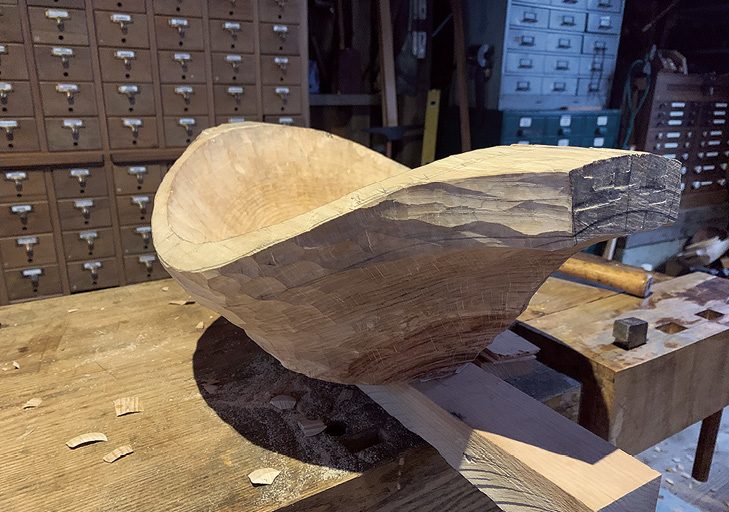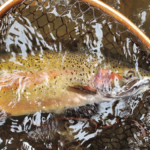The term woodworking is very broad and pretty ambiguous, but a lot of technical concepts within the different specialties—be it cabinet-making, coopering, or spoon carving—crossover. Understanding grain direction, wood movement, species selection, etc., is something all of those crafts-people would need to know to be successful at their particular craft within the realm of woodworking.
Just as technical concepts carry over from specialty to specialty, philosophical and/or even spiritual aspects are also equally applicable across different types of woodworking, and probably most other crafts as well. One such concept that has always intrigued me is the idea of giving the tree or wood I am working with a second life as a chair, bowl, box, or whatever I’m creating at the time.
Recently, on a trip to Maine, I was hand carving a bowl from green birch. Green birch isn’t a species; rather, green refers to wood that is freshly cut down, or at the very least, hasn’t been dried either by air or in a kiln. When one works with green wood you have to be vigilant about the conditions you are working in. If the piece dries out too quickly, it will check; first starting as fine, hairline cracks in the end grain that will eventually run the length of the piece, turning into large splits and chasms. These are the first steps of the wood’s decomposition. There are all these different things to navigate to try and coax this once living organism into a new object. Technically, the wood is dead, but it still has so much life. The tree’s vascular system is still intact and it will still breathe. Wooden objects still retain a significant amount of moisture long after the tree has been made into a door, table or cutting board, and depending on the season, that amount will fluctuate. So, as I work on this bowl, looking at the tree’s grain, I can see significant things that happened to the tree throughout its life. Aspects like its diameter and grain direction all indicate different things. An internal knot was a branch that broke off. A wide growth ring was a season of abundant rain and sun. An uneven growth ring shows a struggle with the terrain or other trees for stability or light. All of these things influence what the final shape will be in a kind of conversation with the wood. If one is careful and patient and knows how to select which areas of the tree to work with, the transition from tree to object can go quite smoothly. If done right and taken care of, this bowl might live just as long or maybe even longer than the birch tree that it once was.
This past autumn I took a basket weaving class at North House Folk School in Grand Marais with instructor April Stone. We were making hex-weave baskets using black ash. I had never done any basketry before and was very unfamiliar with the process of turning the ash log into the splints that would eventually become our baskets. April had prepared bundles of the ash splints for us to use for our baskets. She also brought a log that she had been harvesting material from for our class, to demonstrate, and, if any of us were curious, try our hand at the process of pounding out splints. Ash is a ring porous hardwood; meaning that a growth ring has a segment of dense fibers and a segment of loose, porous fibers. With the log sitting horizontally in two cradles at each end, it gets pounded with special mallets to pulverize the porous section of the growth ring, making it possible to peel off the dense segment that will become our basket material. Essentially, we were harvesting years of the tree’s life to become our baskets. The same things you can witness from looking at the grain of the top of a wooden table, you could see as one peeled back the growth rings of the ash tree; a thicker growth ring, the very tiny start of a new branch, the knot of a branch that had broken off and been grown over. It was a whole new way of looking at the trees’ first life and through the process of craft, becoming a new object and starting its second life. Even after a basket has been a basket for many years, if one wanted to, you could submerge it in water, let the fibers soak up the moisture, and the material would become pliable and workable again. The wood may be a bucket, a pack basket or part of a kite at this point, but somewhere inside, it always remembers its former life as a tree.
Nate White is a Resident Artisan at North House Folk School, where traditional craft is taught on the shore of Lake Superior.






